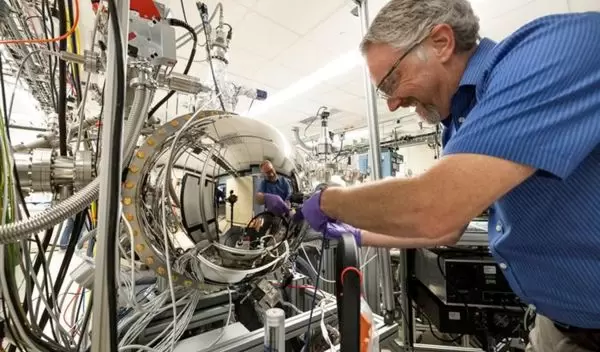
Researchers advance topological superconductors for quantum computing
Quantum computers process information using quantum bits, or qubits, based on fragile, short-lived quantum mechanical states. To make qubits robust and tailor them for applications, researchers from the Department of Energy's Oak Ridge National Laboratory sought to create a new material system.
"We are pursuing a new route to create quantum computers using novel materials," said ORNL materials scientist Robert Moore, who co-led a study published in Advanced Materials with ORNL colleague Matthew Brahlek, also a materials scientist. The work was supported in part by the U.S. National Science Foundation.
The researchers coupled a superconductor, which offers no resistance to electrical current, with a topological insulator, which has electrically conductive surfaces but an insulating interior. The result is an sharp interface between crystalline thin films with different symmetric arrangements of atoms. The novel interface the researchers designed and engineered may lead to exotic new physics and host a unique quantum building block with potential as a superior qubit.
"The idea is to make qubits with materials that have more robust quantum mechanical properties," Moore said. "What is important is that we have learned how to control the electronic structure of the topological insulator and the superconductor independently so we can tailor the electronic structure at that interface."
Challenges remain. "We need to improve and better understand the materials at the atomic level," Moore said. "We now know how to control the materials at the level required to make that happen."


